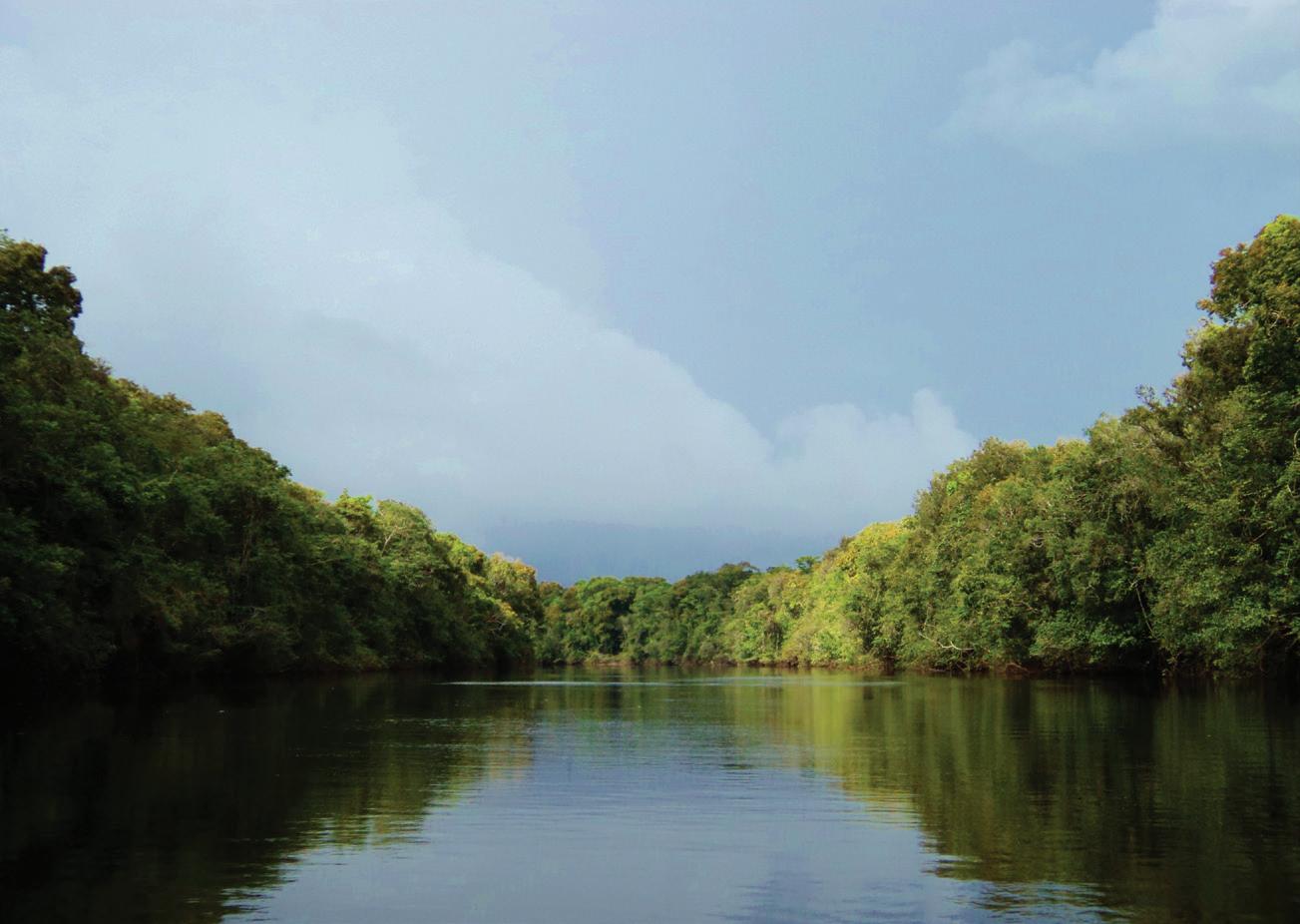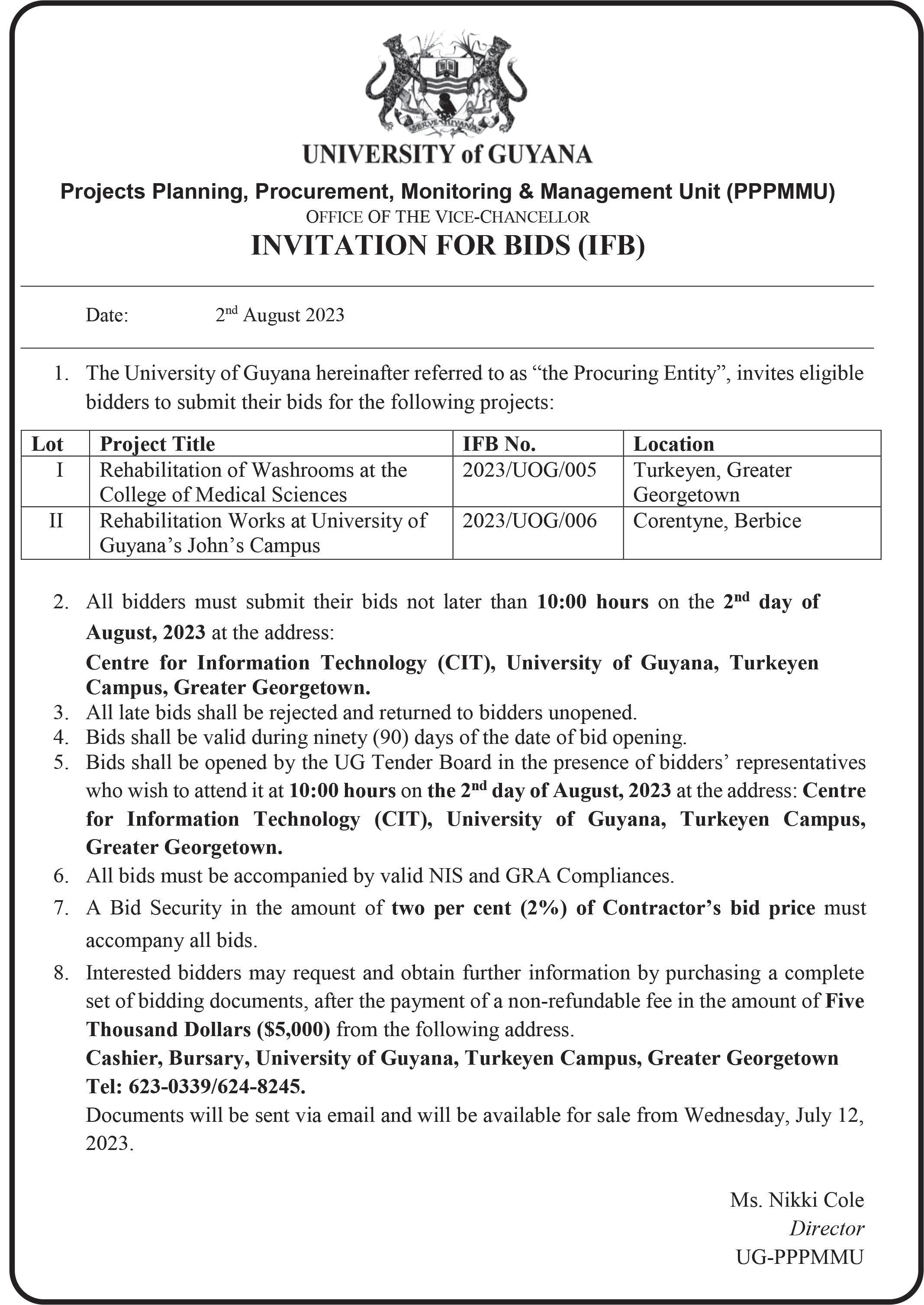
2 minute read
World Rainforest ...
utilisation.
It is often misinterpreted that the movement towards environmental protection is a movement away from human development. Many factors can contribute to this notion, chief among them being the drastic pollution of the environment due to modern industrialisation and globalisation. Mass establishment of infrastructure and high demand for forest resources, including wood for construction and fossil fuels, led to immense forest clearing and a high incidence of human intrusion. Access to forests increased by the access to wildlife and exploitative recreational hunting. Effectively, conventional economic development has been accompanied by a society imbued with destructive culture – a culture of exploitation and excess which became the antithesis of the culture of subsistence and care that preceded it.
Advertisement
But as we visualise this, whose society and culture do we see? Is it a Guyanese one? Is it the culture of our ancestors? Does it embody our values? While Guyana, a melting pot of ethnicities and cultures, is no stranger to global ideals and standards imported with consumerism, media, and technology, the values of Guyanese people have certainly played a role in why more than 99% of our forests are still standing;
FROM PAGE XI forests that store 18% of the world’s forest carbon. We have been able to historically maintain deforestation rates below 1% in the postcolonial era, where global economies have thrived on the exploitation of natural resources. We have been able to retain the status of a country with the second-highest percentage of forest cover in the world even while our people continue to extract forest resources for all scales of livelihood. And while this behaviour is guided by robust institutional mechanisms that sustainably manage forest allocation and governance, those systems themselves have built on the socioeconomic values of forests that predated them. While we have derived the average annual growth rate of timber species from academic studies, we continue to identify our tree species through traditional knowledge. Most of our tree spotters are of indigenous heritage. The people who live amongst the forests will always know its value more intrinsically, beyond timber and beyond money.
Therefore, we must recognise and acknowledge the social value of forests to Guyanese people historically and presently. It is equally important that we understand how that social value has contributed and continues to contribute to healthy, thriving forest ecosystems which are natural capital in our growing economy. Understanding that Guyanese people have been a part of forest ecosystems helps us to avoid what is known as “fortress conservation”. It helps us to understand that conserving forests does not mean excluding people and their livelihoods, but rather that we can promote sustainable utilisation that strives to balance the famed pillars of environmental, social, and economic benefits.
Guyana’s current sustainable forest management (SFM) system is driven by the philosophy and science of sustainable utilisation. The Guyana Forestry Commission (GFC) has the legal mandate for approximately 12.5 M hectares of state forests in Guyana; and, therefore, is responsible for forest resource allocation and management, forest law enforcement and governance, and forest monitoring. The Forests Act 2009 and the Forest Regulations 2018 are the overarching legislative framework for forests in Guyana, while specifications for the SFM framework are detailed in Codes of Practices and Guidelines for Forest Operations.
The GFC’s mandate allows for it to support a productive forestry sector that primarily focuses on commercial timber extraction along with other non-timber forest products, within the limits of an ecologically sound, empirically informed system while also avoiding land use conflicts and accounting for crosscutting, intersectoral perspectives through a multistakeholder approach.
Guyana’s SFM framework is designed to conserve our rich tropical rainforests by implementing the following prescriptions and strategies:
✔ Setting annual quotas for the volume of timber that can be extracted per hectare;

✔ Implementing cutting cycles that stipulate equivalent resting periods for sustainably harvested forest concessions;
✔ Implementing minimum diameter limit for commercially extracted trees. A minimum of 35cm dbh is SEE PAGE XVII










